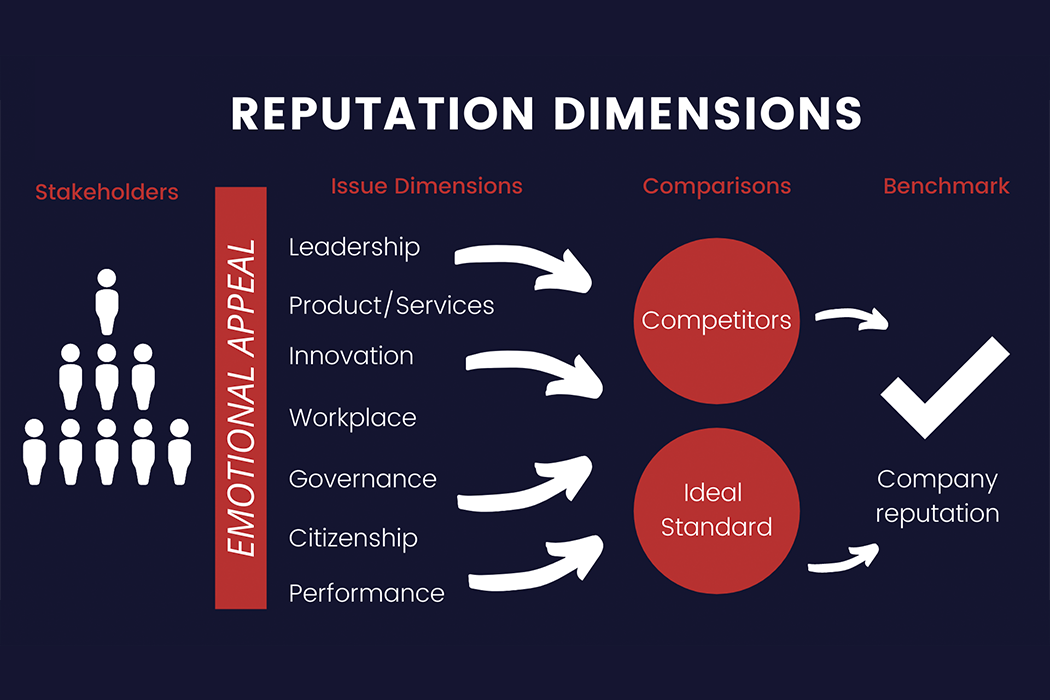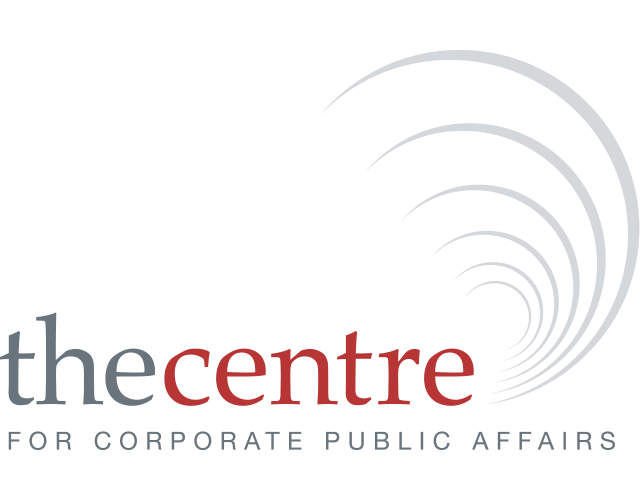Corporate Reputation and its Stewardship
Corporate reputation is the sum of stakeholder perceptions of the positioning or image of an organisation (stakeholders include investors, customers, suppliers, employees, regulators, politicians, non-government organisations, news media, and the communities in which the organisation operates).
Corporate reputation (good or bad) is an outcome.
Inputs to securing positive reputation outcomes include an entity’s product and services, corporate behaviour, financial performance, governance and leadership, and corporate public affairs reputation strategy and its execution.
While the corporate public affairs function is not responsible for an entity’s corporate reputation (everyone in an entity is responsible), the function is accountable for developing reputation strategy (including the desired reputation of the organisation) and coordinating its execution.
Specifically, the corporate public affairs function seeks to influence the perceptions of the organisation’s social-political stakeholders about its corporate reputation. The stakeholders engaged by the function include governments, regulators, elected officials, news media, social media influencers, public commentators, employees, interest groups, investors, non-government advocacy groups (including trade unions and industry groups).
The Centre’s 2019 – 2020 State of Public Affairs in Australia found more than 90 per cent of corporate public affairs teams developed reputation strategy for their organsiation, and more than 60 per cent measure reputation regularly. Many corporate public affairs teams report on reputation to the organisation’s Board. Our interaction and work internationally suggest these figures are reflected across Asia Pacific and many parts of Europe.

A corporate reputation is the sum of perceptions about various aspects or ‘dimensions’: product / service quality, corporate governance, employee relations, customer service, intellectual capital, financial performance, corporate social responsibility, organisational leadership and innovation, and emotional appeal (these dimensions were developed by Dr Charles Fombrun while at NYU Stern School of Business).
Stakeholder perceptions about these dimensions crystallise into the intangible asset of corporate reputation. This drives organisational value through its effect on the behaviour of customers, employees, and shareholders.
Some corporations see corporate reputation as a proxy for social license to operate (though we note the two concepts have characteristics that are mutually exclusive).
A strong reputation attracts customers, employees and investors and can lead to higher profits and stock prices. An incremental increase in reputation, therefore, has an incremental increase on organisational value.
Effectively managing and stewarding an organisation’s reputation requires a disciplined and coordinated process that enables an organisation to effectively manage reputational risk through appropriate actions.
Three elements determine the extent to which an organisation is exposed to reputational risk. The first is whether an organisation’s reputation exceeds its true character (reality). The second is how much external stakeholder beliefs and expectations change, which can widen or narrow this gap. The third and final determinant is the quality of an organisation’s internal discipline and commitment to reputation management.
The reputation management process comprises five steps.
- Assessing the organisation’s reputation among stakeholders and identifying any risks.
- Evaluating the organisation’s character (reality) and closing any reputation reality gaps.
- Continuously monitoring stakeholder beliefs and expectations and assessing the extent to which the organisation is meeting these shifting expectations.
- Driving reputation management from the most senior level of the organisation (ideally at the Executive level).
- Measuring reputation among stakeholders and reporting outcomes to understand progress, and as an input to reputation strategy.
Related resources from the Centre's Knowlede Centre...

Boeing discloses new flaw with 787 jet as problems mount
Boeing's woes continue after the company disclosed a new problem with the manufacturing of its 787 Dreamliner, in addition to setbacks in delayed deliveries and cancelled orders. The company has struggled to contain the issues...
NEWS-DIGEST
Social licence to operate in 2020 with Wayne Burns
The Centre's Executive Director Wayne Burns talks about what it means for an organisation to have a social licence to operate: how it is has changed over time, how it's measured and lost, and the relation social licence has to...
PODCAST
Preserving organisational trust with Professor Nicole Gillespie
In this episode of Very Public Affairs, the Centre's Executive Director Wayne Burns is joined by Professor Nicole Gillesipe, KPMG Chair in Organizational Trust and Professor of Management at the University of Queensland...
PODCASTExplore the Centre’s Knowledge Centre
Browse more Reputation resources in the Knowledge Centre.
